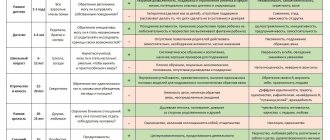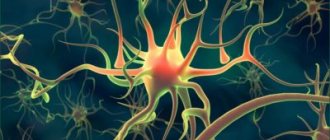The uniqueness of a person is determined not only by his inner world, but also by the totality of personality qualities that influence the individual’s attitude towards life and the people around him. To realize the uniqueness of each inhabitant of the Earth, it is necessary not only to know how personality traits are understood in psychology, but also to be able to notice the main individual psychological characteristics of a person.
Personality traits
Definition of personality in psychology
Personality in psychology is a set of characteristics of a person that determine his behavior and place in society. Society consists of many individuals, each of which is individual and unique.
Personality is formed over the years from a person’s habits and preferences, his emotional reactions, sociocultural experience and accumulated knowledge. The basis for the formation of personality is individual psychophysiological characteristics: the structure of the nervous system, type of temperament, hereditary traits. This is something that is given to a person from birth and that we cannot change in any way.
The personality is built on this foundation under the influence of the social environment. Sociocultural experience is refracted through the prism of individual characteristics, forming a stable psycho-emotional system.
Psychological presentation of an 8th grade student
The girl is calm, reasonable, easily establishes contacts, and is interested in the results of her activities. Maintains social distance. Focused on formal compliance with social norms.
Can independently navigate a learning task, build a hypothesis, predict a result, choose a method of action, work in accordance with well-learned instructions, evaluate the results of one’s activities (there is a tendency to overestimate). For a girl, the formal side of assessing her success is more important.
Cognitive interests are formed and cover subjects of the humanities and natural sciences.
Features of the development of sensory systems:
- the leading system of perception is auditory, lower - visual;
- concentration of attention at an average level;
- stability and distribution of attention according to a number of characteristics - at an average level;
- The volume of visual and auditory-verbal memory corresponds to the age norm.
The speech sphere is without features.
Type of nervous system - medium: potentially capable of withstanding long-term stress during monotonous activity. It takes considerable time to get into the task, after which the most productive period of activity begins, corresponding to the middle and second half of the lesson. The pace of mental activity is high. Fatigue occurs in the form of satiety.
The emotional sphere is characterized by high situational anxiety due to the desire to meet the “ideal” created by the girl under the influence of the inflated demands of significant adults (parents), and the fear of not meeting expectations.
The external impression of inadequately high self-esteem hides internal dissatisfaction with her real achievements, which is why the girl attaches so much importance to formal signs of success (good grades). The level of claims is too high. Accepted in the peer group.
Recommendations for teachers
When organizing the educational process, you should use the girl’s ability to work independently according to the learned algorithm. When learning new or complex educational material, it should be offered closer to the middle of the lesson or in the second half. If difficulties arise, it is advisable to repeat the most difficult moments orally and/or offer visual supports. If fatigue occurs, the girl is recommended to change the type of activity.
When assessing the results of activities, it should be argued in detail. It is useful to encourage the girl to independently evaluate her results, explaining her point of view. It is necessary to provide the opportunity for self-expression in the most successful activities, encouraging real achievements in every possible way.
Individual, individuality, personality
The concept of “personality” is closely related to two other terms: individual and individuality. Despite their similarities, they have key differences.
An individual is a separate representative of the genus Homo Sapiens. This is “a person in general,” without emphasis on any of his individual characteristics.
More than 100 cool lessons, tests and exercises for brain development
Start developing
Individuality is a system of unique traits inherent in a particular person.
Each person is born an individual, then his individuality is formed, which crystallizes into a personality through interaction with the social environment.
What is character?
- Character, personality, personality refers to the sum of characteristics that a person possesses. Character refers primarily to moral qualities, ethical standards, principles and the like; a man of impeccable character.
- Individuality refers to the distinctive qualities that make a person recognizable as an individual different from others; a woman with a strong personality.
- Personality refers to the combination of external and internal characteristics that determine the impression a person makes on others: a child with a bright or pleasant personality.
Does every person become an individual?
Based on the definition, at first glance it may seem that everyone. All people have their own individual characteristics that influence their behavior.
However, the matter is more complicated. Personality is a product of the individual’s socialization. It is formed only under the influence of society. If a person does not integrate into society in time and does not go through all stages of socialization step by step, then, unfortunately, he will not become a person.
The phenomenon of a person without personality can be observed in the so-called Mowgli people. These are individuals who were taken from the human environment as children and raised by animals. Even if they are returned back to society, they will never become full members of it. They simply have not formed and developed the brain functions responsible for social interaction, and the sensitive (most favorable) periods for their development have already passed. Therefore, such people have no personality.
Fundamental Traits of an Extrovert
The fundamental personality traits of an extrovert are the following:
- extraversion (a set of such qualities of the human personality as sociability, talkativeness, and a desire for people);
- goodwill (consists of friendliness, politeness, ability to make compromise decisions);
- conscientiousness (accuracy plus hard work);
- neuroticism (inability to remain calm in stressful situations coupled with emotional instability);
- openness to learning everything new.
Personality Components
What does personality consist of? This is a multi-component complex structure. Its components are stable mental phenomena that manifest themselves in the process of activity and interaction with other people. These include abilities, temperament, character, will, emotions, motivation. Let's look at them all in detail.
Capabilities
Abilities are what determine an individual’s success in various activities.
This concept can be interpreted in different ways. On the one hand, abilities mean the peculiarities of the course of mental processes that positively affect the quality of activity. On the other hand, this is a high level of development of skills, abilities and knowledge.
There are several classifications of abilities.
By structure, abilities are divided into:
- Elementary abilities. They are associated with brain functions inherent in every person. These include, for example, the ability to distinguish colors, smells, sounds, and the ability to remember and assimilate information. They are congenital, but can be developed throughout life.
- Complex or socially determined abilities. These are abilities for some specific activity. For example, musical, sports, artistic, literary abilities. They are not innate, they develop in the process of interaction with society.
By prevalence:
- General abilities are common to all people. For example, the ability to communicate, motor abilities, aesthetic and moral activity.
- Private abilities are not common to everyone. An important role in their formation is played by inclinations: musical ear, artistic and aesthetic sense, etc.
Depending on the nature of the activity there are:
- Theoretical abilities are associated with abstract logical thinking. They reflect how well a person solves theoretical problems, operates with abstract terms, and establishes logical connections between objects and phenomena.
- Practical abilities are associated with the manipulation of specific objects in the process of activity.
All abilities complement each other and allow a person to develop harmoniously. Success in life largely depends on their implementation.
Temperament
Temperament is a set of properties of the nervous system and characteristics of the course of mental processes that determine human behavior and reactions. Temperament is an innate characteristic that does not change throughout life.
The classification of temperaments was proposed by Hippocrates in the 5th century BC. e. He divided people into sanguine, phlegmatic, choleric and melancholic. People use this classification to this day. What is each temperament type?
The main characteristics of the sanguine temperament are stability of the nervous system and extroversion. Sanguine people are active, energetic, fun people. They easily get along with people, are optimistic and active. They are distinguished by the ability to quickly adapt to changing conditions and a high level of self-regulation.
Phlegmatic people are introverts with a stable nervous system. They are cold-blooded, weakly emotional, and slowly excitable. However, when they manage to get involved in an activity, they show a high level of performance. It is difficult to adapt to new conditions and difficult to give up old habits.
Choleric temperament is characterized by instability of the nervous system and extroversion. Cholerics are quick-tempered, emotional, and impulsive. But they cool down quite quickly if they are met halfway.
Melancholic people are introverts with an unstable nervous system. These are anxious, pessimistic, vulnerable people. They are prone to constant self-examination and excessive preoccupation with their inner life.
Knowledge of temperament opens up wide possibilities for a person. Based on them, you can plan activities much more effectively. You will know your own characteristics, try to avoid potentially vulnerable situations, and interact effectively with people.
Look for tests to determine the type of temperament and highlight the predominant character traits in our selection of psychological tests.
Character
Character is a stable system of ways a person interacts with the world.
Unlike temperament, character is not an innate characteristic. It is more flexible and subject to all sorts of influences. However, it is still based on congenital characteristics, which are subsequently superimposed by environmental factors.
Individual stable patterns of human behavior in various situations are called character traits. There are three groups of such traits:
- Communicative. They manifest themselves in communication with other people. A person can be sociable or reserved, tactful or harsh, friendly or aggressive.
- Business. Characterize a person in activity. These include accuracy, diligence, hard work, carelessness, laziness and others.
- Strong-willed. They characterize a person’s ability to consciously manage his attention and direct it towards achieving a goal. These include determination, perseverance, perseverance, compliance, etc.
Also take a look at our articles about the positive and negative qualities of a person.
Will
Will is one of the most important components of personality, its core. It is willpower that determines the strength of personality. Will means the ability to manage one’s behavior, control mental states and processes.
Different motives, desires, and orientations constantly struggle within a person. The will helps us to follow those of them that at a particular moment in time are most useful and bring us closer to achieving the goal. Therefore, the will is always associated with self-restraint.
Will is not a static quantity. It can be trained like a muscle. We wrote in detail about self-discipline in the article on how to develop willpower.
Emotions
Emotions are individual experiences that arise in response to external or internal stimuli.
Humans need emotions to adapt more effectively to the environment. They play an important role in the process of interaction between people.
In psychology, it is customary to classify emotions as follows:
- Mood is a set of emotional reactions occurring at a certain point in time.
- The simplest emotions are emotions associated with the satisfaction of physiological needs.
- Affect is a violent uncontrollable outburst of emotions.
- Feelings are experiences caused by a specific object or person.
- Passion is a bright, strong and positively colored emotion that a person is unable to resist.
- Stress is a mixture of strong negative emotions with characteristic physiological reactions.
Emotions have a strong influence on a person’s perception of his own life and on other people’s perception of him. All people experience emotions differently.
Motivation
Motivation is a mental component that is responsible for motivating a person to activity. This is a set of reasons that determine human behavior.
Motivation is closely related to human needs. We can say that it is a kind of tool for satisfying needs. The more strongly a specific need is expressed, the higher the motivation for its implementation.
The operating unit of motivation is the motive. This is an internal urge that arises in response to a need and forces a person to perform certain actions.
Motivation is the main driving force of our development. Without it, a person will not be able to achieve success in life and realize his potential. Therefore, you need to treat it with care and attention.
Psychological characteristics of a 6th grade student
The boy is friendly, emotional, very impulsive, restless, sometimes it seems that the child does not control his actions and statements. Subject to frequent mood swings. Social distance is not always maintained.
With a little help from an adult, he can independently identify a learning task, build a hypothesis, predict the result, choose a method of action, act in accordance with the chosen or learned instructions, and shows a tendency to non-standard ways of solving learning problems. Does not always give an adequate assessment of his own activities.
The boy has a wide range of cognitive interests and high learning potential. However, educational activities are not a priority.
Features of the development of sensory systems:
- the leading perception system is auditory;
- concentration of attention corresponds to the average level;
- stability and distribution of attention according to several criteria is at a medium-low level;
- the volume of visual and auditory-verbal memory is at the upper normative limit of the age norm.
The speech sphere is without features.
The type of nervous system is moderately weak: during monotonous activity, fatigue in the form of satiety is observed, but is capable of short-term mobilization. Little time is required for processing; the greatest productivity corresponds to the first half and middle of the lesson. The pace of mental activity corresponds to the age norm.
The emotional-personal sphere is characterized by increased anxiety and the desire for self-affirmation and leadership in the group (self-esteem is low with an adequately high level of aspirations). He has difficulty comparing himself to others, so he prefers individual communication with teachers, especially in situations where knowledge is being tested. The façade of lack of educational motivation hides a high level of anxiety, which at times can even manifest itself in refusal to do activities in case of expectation of “failure.” The peculiarities of his upbringing have led to the fact that the boy, copying the behavior of his older brother and often provoking adults to a negative assessment of his actions, involuntarily seeks to confirm it. In a group of peers he occupies the position of an informal leader.
Recommendations for teachers
When organizing the educational process, a child sometimes needs organizing and stimulating help at the stage of comprehending the task. When learning new or difficult educational material, it is better to offer it in the first half of the lesson. If difficulties arise while completing a task, you should repeat the complex material again. If signs of fatigue appear, you should change the type of activity.
To overcome anxiety, it is advisable for the child to offer those types of tasks (providing the opportunity to consult with the teacher) that involve the use of non-standard solution methods and in which the boy can be most successful. When assessing activities, it is better to express critical comments confidentially and be sure to provide reasons.
It should be borne in mind that the external behavioral manifestations of a child often do not correspond to his internal state of mind.
Concepts and theories of personality development
The topic of personality has always fascinated the minds of psychologists and philosophers. Since this concept is complex and multifaceted, there are several scientific doctrines that explain how personality is formed. Let's briefly look at the main ones.
Sigmund Freud's theory
The founder of psychoanalysis viewed personality as a three-component structure consisting of:
- The id (It) is the unconscious part of the psyche, in which instincts, inherited characteristics, and deep-seated drives dominate.
- Ego (I) is a mental component that is in contact with the outside world. The ego transforms part of the id energy into a socially acceptable form and ensures the successful integration of the person into society.
- Superego (Super-I) is a component associated with the value system that dominates society. This is a kind of judge who supervises the compliance of a person’s behavior with generally accepted norms.
Sigmund Freud's theory has gained unprecedented popularity in both scientific and lay circles. It reveals the deep processes underlying human behavior. The main idea of the concept is that our behavior is largely determined by irrational unconscious drives, in particular sexual drive.
The theory of Carl Gustav Jung
According to Jung, personality formation is based on innate principles that are passed on from generation to generation. They are called archetypes. Over the course of life, these archetypes acquire individual characteristics and form a personality.
According to Jung's concept, a person's “I” constantly strives for unity and integrity. This unity is achieved by balancing various elements in the process of self-realization of the individual.
Jung identified several main areas of personality:
- Unconscious collegiality. It stores the memory of the entire historical path of mankind.
- Unconscious personal. Affects feelings, complexes, and aspirations of a person that are repressed from consciousness.
- Conscious personal. That part of the personality that a person is aware of and which he is able to influence. Consists of thoughts, memories, feelings, desires.
Humanistic personality theory
This theory is based on the idea of a person as a subject who strives to realize his potential. Creativity and purposeful activity are the main driving force of personal development.
Abraham Maslow and Carl Rogers are considered the most prominent representatives of the humanistic school.
Maslow created the famous pyramid of needs. According to his theory, needs are divided into lower and higher. The former cease their effect after they are satisfied, while the latter intensify their effect.
Rogers believed that personality formation is the result of active self-knowledge. A person discovers his innate potential and tries to realize it.
Behavioral (behaviourist) theory of personality
According to this theory, the main driving force of personality development is the environment in which a person finds himself. Personality is an intermediate link between stimulus and response. The formation of personality occurs in the process of learning.
Behaviorists believed that humans have virtually no free will. All his actions and deeds are determined by external circumstances, to which he reacts almost reflexively.
Psychological characteristics of a 7th grade student
The boy has been studying at school since the beginning of the current school year; the adaptation process has not yet been completed. In general, the teenager is friendly, calm, and experiences some difficulties in establishing contacts. Maintains social distance.
Left-handed (it is recommended to tell teachers in detail about the peculiarities of educational activities and the emotional sphere of left-handed people).
With a little help from an adult, he can independently identify a learning task, build a hypothesis, predict the result, choose a method of action, work in accordance with selected or learned instructions, and shows a penchant for creative ways to solve learning problems. Can give an adequate assessment of one's own activities.
Free legal consultation
We will answer your question in 5 minutes!
Free legal consultation We will answer your question in 5 minutes!
Call: 8 800 511-39-66
Ask a Question
Has a wide range of educational interests.
Features of the development of sensory systems:
- the leading perception system is auditory;
- concentration of attention corresponds to a high level;
- stability and distribution of attention according to several criteria is at a high level;
- The volume of visual and auditory-verbal memory corresponds to the age norm.
This is also important to know:
Characteristics for PMPK grade 2 from the class teacher: examples and samples
A feature of the speech sphere is impaired sound pronunciation. This can cause private dysgraphic errors and, in turn, require the student to consult a speech therapist and additional classes in the Russian language.
The type of nervous system is moderately weak: during monotonous, monotonous activities, the child, experiencing fatigue and satiety, strives to rationally distribute his forces and is capable of short-term mobilization. It takes a little time to master the task, after which a rather long productive period of activity begins, which coincides with approximately the first half of the lesson. The pace of mental activity corresponds to the upper normative limits.
The emotional and personal sphere is characterized by high anxiety caused by dissatisfaction with one’s physical characteristics. This anxiety situationally manifests itself in verbal aggression of a defensive nature. The teenager has adequate self-esteem with a high level of aspirations. Accepted in the peer group.
Recommendations for teachers
When organizing the educational process, the teenager should be given independence and encouraged to strive for non-standard ways of solving educational problems, since he is able to solve problems of increased complexity. At the same time, it is recommended to take into account that a teenager will obviously be able to learn difficult or new educational material better in the first half of the lesson. In cases of difficulties, explanations on the task can be repeated orally. When assessing activities, emphasize the child’s successes in every possible way. Give critical comments mainly confidentially and reasoned.
What is it for?
Psychological portraits are used in their work by psychologists, psychiatrists, teachers, criminologists, and HR specialists. Each of them has its own approach to diagnosing the main parameters and its own tools.
They all also serve different purposes. Psychologists draw up a portrait to identify the client’s strengths and weaknesses, his internal contradictions, traumas and develop a strategy for solving problems. Teachers need it to choose the optimal teaching model. For criminologists - to better understand the identity of the criminal. HR specialists - to determine whether the applicant is suitable for the proposed position.
Why does an ordinary person, whose activity is not connected with any of these areas, need to draw up a psychological portrait? It would seem that no one can know a person better than himself. No matter how it is! Our perception of ourselves is greatly distorted. It is influenced by psychological defenses, false beliefs, childhood traumas and other psychological debris.
High-quality diagnostic techniques are able to bypass all these factors and produce the most objective and pure result. It can be used for the following purposes.
- Self-knowledge
A psychological portrait will allow you to look at yourself from the outside and see what was hidden from self-reflection. This will give you a bunch of new opportunities in terms of working on yourself.
- Career guidance
Not all people can easily decide on the choice of field of activity. But this is the most important and fateful choice in life. The happiness and well-being of a person depends on it. A psychological portrait will help determine in which types of activities you can reveal yourself best.
- Compatibility with people
When choosing a partner for life together or for business, it would be nice to get acquainted with his psychological portrait. This will help build harmonious relationships, correctly distribute roles, and avoid pitfalls during interaction. This approach may seem too pragmatic, but it really works.
- Effective business communication
Knowing the characteristics of your clients or partners, you can develop a strategy for mutually beneficial cooperation.











